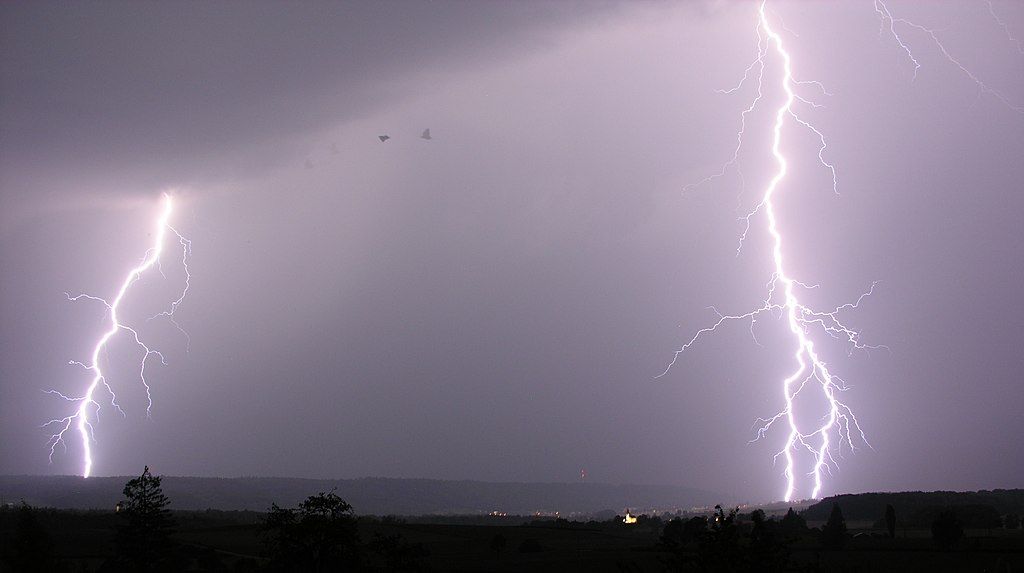
25 August 2014
After a week of daily thunder and heavy rain we’re finally getting a spate of clear weather. Today’s interesting thunder facts can’t be applied immediately but we’ll get another chance before long.
We’re all familiar with the crack of lightning and thunder’s low rumbles. Sometimes we hear another loud bang in the middle of the series. Why does thunder rumble and what are those mid-bangs about? I found an explanation at the UK’s Weatheronline website.
First, let’s review the basics about light and sound. Lightning travels at the speed of light, thunder at the speed of sound. There’s such a time lag between them that we can figure out how far away the lightning is by counting the seconds between the flash and the sound, 5 seconds per mile.
The initial thunderclap is the closest part of the lightning but (amazingly!) the bolt itself is several miles long. We see it flash in twists and turns, branches and offshoots. Every piece makes a thunderclap but many of the parts are so distant they sound like rumbles instead of booms.
What’s the bang in the middle? It might be a new lightning bolt but … it could be the same bolt zigzagging closer as it travels through the sky. The closest part is that middle bang. Click here for an illustration showing how sound lags within a single lightning bolt.
Thunder rumbles because lightning is not a short, contained flash. If it was we would hear a single loud boom, like the boom of an electrical transformer blowing up on the pole outside your house. (I’ve experienced this!)
And here’s a cool note about the photo:
Do you see the birds flying below the cloud? It’s actually only one bird! The lightning flashed four times while the shutter was open so the bird appears four times as it flies through the storm. Brave bird!
p.s. To see all four bird images, click here for the annotated photo with a yellow box.
(photo of lightning in Switzerland by Hansueli Krapf via Wikimedia Commons)